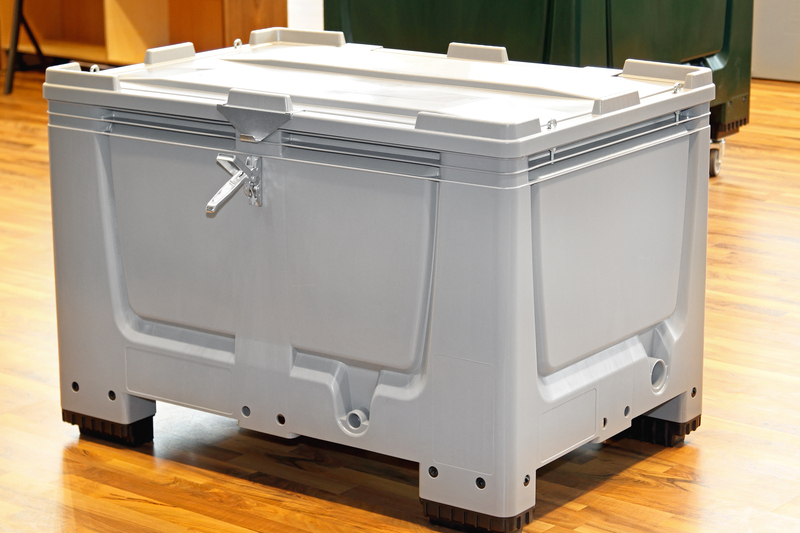How Kinetic Lifting Can Boost Your Balance and Core Stability
Kinetic lifting is revolutionizing the world of fitness, unlocking massive benefits for balance and core stability. Whether you're a seasoned athlete or a beginner, harnessing the principles of kinetic movement can take your workout routines to new heights, improving not only your strength but also your functional stability and coordination. In this comprehensive guide, you'll discover the science, practical applications, and top techniques of kinetic lifting to supercharge your balance and core stability goals.
Understanding Kinetic Lifting: The Basics
Kinetic lifting refers to strength training exercises that involve dynamic, multi-plane movements and engage several muscle groups, especially the stabilizing muscles. Unlike traditional weightlifting, which often isolates muscle groups, kinetic lifting integrates full-body movement patterns to enhance proprioception, balance, and deep core activation.
What is Kinetic Lifting?
- Multi-directional Movement: Movements that occur in more than one plane of motion, such as twisting, bending, or lateral movements while lifting.
- Neuromuscular Engagement: Requires increased communication between your nervous system and muscles, improving coordination and reaction time.
- Functional Strength: Focuses on real-world applications of strength, helping your body perform everyday activities more efficiently.
Kinetic lifting exercises include kettlebell swings, Turkish get-ups, medicine ball throws, and single-leg deadlifts, all of which activate stabilizer muscles and enhance core strength.
How Does Kinetic Movement Enhance Core Stability?
When you lift dynamically and move weight through various planes, your body calls upon deep core muscles--like the transverse abdominis and multifidus--to maintain stability. This dynamic engagement creates a solid foundation for improved posture, injury prevention, and balance. As a result, kinetic lifting is indispensable for anyone looking to build a balanced body and a robust core.

The Science Behind Balance and Core Stability
Balance and core stability are interconnected aspects of functional fitness. Your core muscles--including your abdominals, lower back, glutes, pelvic floor, and hip muscles--provide support for every movement. A strong, stable core translates into better balance, coordination, and athletic performance.
Why Are Balance and Core Stability Important?
- Reduces Risk of Falls and Injuries: Enhanced stability helps prevent falls, twists, and unnecessary injuries during athletic activity or daily life.
- Improved Athletic Performance: Athletes with superior core stability and balance run faster, jump higher, and react quicker.
- Better Posture and Mobility: Proper core engagement ensures upright posture and reduces back pain.
- Efficient Movement Patterns: Movement becomes smoother and more energy-efficient with a strong core.
By introducing kinetic lifting, you address both balance and core strength, developing the foundational fitness that underpins every movement you make.
How Kinetic Lifting Improves Balance and Core Stability
This unique lifting approach relies on instability and movement. While traditional lifting emphasizes stability and heaviness, kinetic strength training adds motion--forcing your body's stabilizers and core to work overtime. Let's take a closer look at how this works:
1. Engaging the Deep Core
During kinetic moves (like a kettlebell swing or an overhead snatch), your core muscles must fire continuously to counteract changes in center of gravity. The constant shifts and changes in direction demand a higher level of core control compared to traditional static lifts.
2. Enhancing Proprioception
Kinetic lifting exercises train your body's proprioceptive system (your sense of body position), crucial for balance. These exercises challenge your stabilizer muscles, making micro-adjustments that boost your balance reflexes.
3. Developing Functional Strength
Exercises that mimic real-life movement patterns, such as lunging with a twist or carrying weights in different planes, build athletic and "ready-for-anything" strength. Transferring power across your muscles in coordinated, kinetic movements helps improve core strength and dynamic stability.
4. Improving Structural Alignment and Posture
Engaging multiple muscle groups while moving under load improves postural alignment. An upright, activated core also reduces strain on the spine and improves posture in daily activities.
Top Kinetic Lifting Exercises for Balance and Core Stability
Ready to introduce kinetic lifts to your training? Below are some of the most effective exercises to activate your entire core and challenge your balance. These moves blend strength, balance, and dynamic motion for comprehensive results.
-
Kettlebell Swings:
- Explosive hip movement activates the glutes, core, and hip flexors.
- Builds power and teaches you to stabilize your spine during rapid movement.
-
Turkish Get-Ups:
- Complex, multi-step movement requiring core strength and full-body coordination.
- Superb for boosting balance, stability, and joint mobility.
-
Medicine Ball Rotational Throws:
- Engages obliques, abdominals, and hip stabilizers as you twist and release.
-
Single-Leg Romanian Deadlifts:
- Demands strong balance and single-leg core control.
- Works glutes, hamstrings, erector spinae, and lower core muscles.
-
Banded Pallof Presses:
- Isometric anti-rotation core drill--teaches your body to resist twisting under dynamic tension.
-
Offset Farmer's Carries:
- Holding weights unevenly challenges side-to-side (lateral) core stabilizers and grip strength.
Tip: Always maintain proper form and progress gradually. Start with lighter weights and focus on movement quality for maximum benefits and safety.
Benefits of Kinetic Lifting for Balance and Core Stability
Incorporating kinetic movement into your strength training unlocks several advantages, including:
- Full-Body Engagement: Every kinetic lift calls on multiple muscles, amplifying calorie burn and functional athleticism.
- Injury Prevention: Strengthening stabilizing muscles protects joints and reduces likelihood of strains and sprains.
- Core Power and Endurance: Repeated engagement builds lasting core strength that serves in both athletics and life.
- Enhanced Balance: Your body learns to adapt to unexpected forces and changes in direction.
- Better Sports Performance: Dynamic control and stability translate to faster reaction times and more powerful movements.
- Improved Posture: A strong core and engaged stabilizers support upright, pain-free posture all day.
Incorporating Kinetic Strength Training Into Your Routine
Adding kinetic core stability exercises to your fitness routine does not require a complete overhaul. Start slow and choose 2-3 kinetic moves that fit your current ability level. As you progress, increase complexity or resistance for continual gains.
Sample Kinetic Lifting Routine for Core Stability
- Warm Up: 5-10 minutes dynamic mobility work (leg swings, arm circles, hip openers)
- Kettlebell Swings: 3 x 15 reps
- Single-Leg Romanian Deadlift: 3 x 8 reps per leg
- Turkish Get-Up: 3 x 5 reps per side
- Medicine Ball Rotational Throw: 3 x 10 throws per side
- Banded Pallof Press: 3 x 10 presses per side
- Cool Down: Stretch and foam roll core, hips, and hamstrings
*Rest for 60-90 seconds between sets. Always prioritize control and form over speed or weight lifted.
Tips for Maximizing Balance and Core Strength Results
- Focus on Quality: Quality movement is crucial. Prioritize correct technique, slow controlled reps, and purposeful breathing.
- Gradually Increase Challenge: Add complexity or resistance only as your balance and strength improve. More advanced moves include single-arm kettlebell snatches or uneven farmer's carries.
- Stability Before Weight: It's better to master a lighter load with perfect form than to compromise stability with a heavy lift.
- Consistency is Key: Incorporate kinetic lifts 2-3 times per week for lasting results.
- Listen to Your Body: Adequate rest and recovery are essential. Address tightness, weakness, and adjust intensity as needed.
Common Mistakes to Avoid in Kinetic Lifting
As with any training style, certain pitfalls can limit your progress or increase risk of injury with kinetic movement training. These include:
- Poor Core Bracing: Failing to activate your core during dynamic lifts compromises stability.
- Progressing Too Quickly: Jumping to advanced variations before mastering basics leads to imbalance and potential strain.
- Letting Form Slip Under Fatigue: When tired, it's easy to lose technique. Prioritize form and stop sets if necessary.
- Neglecting Unilateral Movements: Training both sides equally is essential for balanced strength and stability.
Who Can Benefit from Kinetic Lifting?
Kinetic strength training and movement are suitable for:
- Athletes: For peak sports performance, injury resistance, and explosive power.
- Seniors: To prevent falls, maintain independence, and preserve mobility as you age.
- Fitness Beginners: For foundational body awareness and balance.
- Rehabilitation: To re-build stability and coordination after injury (with professional supervision).
- General Population: For anyone seeking improved core strength, posture, and functional movement.

The Lasting Impact of Kinetic Lifting on Balance and Core Health
Building balance and a robust core is not just for athletes--it's essential for everyone's long-term health, mobility, and vitality. By incorporating dynamic, kinetic movement lifting into your exercise routine, you equip your body with the strength, power, and stability needed for whatever life throws your way.
Remember, consistency and progression are critical. Start with manageable weights and simple movements, then evolve as your coordination and strength grow. In time, you'll notice newfound confidence, healthier posture, fewer injuries, and an all-around athletic body that's as stable as it is strong.
Conclusion: Start Your Kinetic Lifting Journey Today
Kinetic lifting offers a science-backed, effective path to boost balance and core stability. Through the integration of dynamic, total-body movements, you'll develop deep core engagement, exceptional balance, and superior control--paving the way for enhanced athletic performance and functional wellness.
If you want to advance your strength, stability, and functional fitness, start incorporating kinetic lifting into your workouts. Remember to focus on movement quality, progress slowly, and enjoy the balance and core benefits that come with kinetic training!
Ready to improve your balance and core strength? Try kinetic lifting today!



